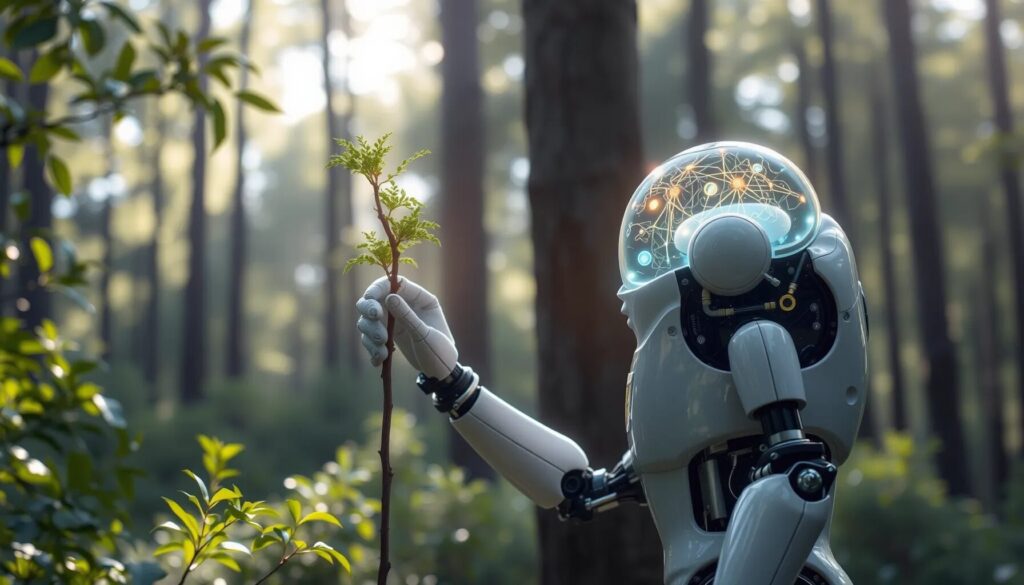Introduction
The concept of smart cities is rapidly gaining traction in urban planning and development. With the rapid advancements in robotics, artificial intelligence (AI), and other intelligent technologies, the future of urban life is poised for a monumental shift. The integration of these technologies into urban infrastructure promises to make cities more efficient, sustainable, and accessible, addressing many of the challenges faced by modern urban environments, such as traffic congestion, pollution, energy consumption, and the demand for public services.
In this article, we will explore how robotics and AI are transforming cities around the world. We will examine how intelligent technologies are being used to create sustainable urban environments, enhance the quality of life for residents, and improve the efficiency of city operations. Furthermore, we will analyze the challenges associated with the implementation of these technologies and the potential impacts they will have on society.
1. The Role of Robotics and AI in Smart Cities
a. Automating Urban Infrastructure
One of the most significant ways robotics and AI are contributing to the development of smart cities is through the automation of urban infrastructure. This includes everything from transportation systems to utilities management, all aimed at creating a more efficient, scalable, and sustainable urban environment.
Autonomous vehicles (AVs), such as self-driving cars, buses, and trucks, are poised to revolutionize urban mobility. These AI-driven vehicles can communicate with one another to optimize traffic flow, reduce congestion, and enhance safety on the roads. Additionally, AVs can be integrated into smart grids to optimize energy consumption, delivering electricity only when and where it’s needed, based on real-time demand.
The automation of building systems is another area where robotics and AI are having a profound impact. From heating and cooling systems to security and waste management, automated solutions are reducing the energy footprint of buildings while improving their functionality. Smart thermostats, for example, learn from user behavior and adjust temperature settings to save energy while maintaining comfort.
b. Intelligent Public Services
AI and robotics are also enhancing public services in smart cities. For instance, AI-powered chatbots and virtual assistants are being used to provide 24/7 customer service, helping citizens with everything from answering questions about public transportation to resolving complaints about utilities. These services save both time and money while improving the overall user experience.
In addition to AI-driven communication systems, robotics are being deployed for public safety. Drones are increasingly being used by law enforcement and emergency responders to monitor large public events, track criminal activity, and provide first responders with real-time data in emergency situations. Robots are also being used in search-and-rescue operations, helping to locate survivors after natural disasters or in hazardous environments.
Expert Comment:
“Integrating robotics and AI into urban infrastructure is about more than just efficiency. It’s about creating a city that responds intelligently to the needs of its citizens, anticipates problems before they arise, and continuously improves its own operations.” — Dr. Emily Roberts, Urban Technology Expert
2. Green Technology and Sustainability in Smart Cities
a. Energy Management and Efficiency
One of the key challenges faced by modern cities is sustainable energy use. Smart cities aim to reduce their carbon footprint through green technologies that optimize energy consumption across residential, commercial, and industrial sectors.
AI-driven energy management systems play a crucial role in this process. These systems analyze vast amounts of data in real-time to adjust energy consumption patterns. For example, smart grids use AI to predict energy demand, adjust power distribution dynamically, and ensure that renewable energy sources like solar and wind are fully utilized, reducing reliance on fossil fuels.
Robotics also contributes to sustainability efforts. Robotic solar panel cleaners, for instance, use autonomous systems to clean solar panels in large fields, maximizing their efficiency and energy output without human intervention. These robots can work around the clock, ensuring that solar energy generation remains at peak performance.
b. Waste Management and Recycling
Waste management is another area where robotics and AI are transforming smart cities. Robotic waste sorting systems are being implemented in cities around the world to separate recyclables from waste automatically. These systems can identify materials such as plastics, glass, and metals, ensuring they are sent to the appropriate recycling facilities, which helps to reduce landfill use and promotes a circular economy.
In addition to waste sorting, robotics is also being used for waste collection. Autonomous robots and drones are being used to collect waste from residential and commercial areas, ensuring that trash is picked up efficiently and with minimal human involvement. This not only reduces the workload of waste management staff but also decreases the environmental impact of waste transportation.
c. Sustainable Agriculture
Sustainability also extends to urban agriculture, a growing trend in smart cities. Robotic farming technologies are being used to grow food in urban environments, utilizing vertical farming and hydroponic systems. These systems use AI and robotics to monitor and control environmental factors such as temperature, humidity, and light, ensuring optimal growth conditions for crops. By growing food in cities, transportation costs and carbon emissions are reduced, while increasing local food security.

3. Enhancing Urban Mobility with Robotics and AI
a. Autonomous Transportation
One of the most visible applications of robotics and AI in smart cities is in the realm of autonomous transportation. Self-driving cars, buses, and trucks are already being tested in urban environments, with the promise of reducing congestion, improving safety, and making transportation more efficient.
For instance, in some cities, autonomous buses are already operating on a small scale, providing a more flexible and on-demand alternative to traditional public transportation systems. These buses can adjust their routes based on real-time demand, reducing wait times for passengers and improving traffic flow.
Additionally, robotic delivery systems are transforming the way goods are transported within cities. Drones and autonomous delivery vehicles are being used to deliver packages quickly and efficiently, bypassing traditional traffic congestion and reducing delivery times. This can result in a more convenient and cost-effective system for residents and businesses alike.
Case Study:
In Dubai, autonomous vehicles are being tested to transport passengers across short distances, and the city is also working on an integrated robotic taxi service that can connect with smart transportation networks. These innovations aim to make the city’s public transportation system more efficient and eco-friendly.
b. Mobility as a Service (MaaS)
Mobility as a Service (MaaS) is an emerging concept that integrates various forms of transportation—such as buses, taxis, bikes, and car-sharing—into a single, unified platform powered by AI. This allows city residents to plan, book, and pay for trips seamlessly through a mobile app, without the need for individual transportation modes or services.
AI-driven platforms can predict transportation demand, suggest the most efficient routes, and even ensure the availability of vehicles when needed. This seamless integration helps to reduce traffic congestion, lower pollution, and offer residents more flexible transportation options.
4. The Challenges and Ethical Considerations of Implementing Smart Cities
a. Privacy and Data Security
As smart cities rely heavily on data collection, AI, and robotics, concerns about privacy and data security are paramount. The vast amount of personal and behavioral data generated by connected devices, surveillance systems, and autonomous vehicles can be vulnerable to breaches or misuse.
To address these concerns, robust cybersecurity measures must be in place, and there needs to be clear legislation on data ownership and usage. Residents must feel confident that their personal data will be protected and used responsibly.
b. Job Displacement and Economic Impact
While automation and robotics bring many benefits, there is a concern about the potential for job displacement. As AI and robots take on roles traditionally performed by humans—such as in transportation, manufacturing, and customer service—there will be a need for reskilling programs and policies to support workers in transitioning to new roles.
Governments and businesses will need to balance technological advancement with economic stability, ensuring that the benefits of automation are widely distributed across society.
5. The Future of Smart Cities: A Vision for 2050 and Beyond
As we look toward the future, smart cities are expected to become even more interconnected, autonomous, and sustainable. Robotics and AI will continue to play a central role in shaping the cities of tomorrow, with innovations in urban farming, green energy, public safety, and transportation.
By 2050, it is possible that most major cities will have fully autonomous transportation networks, highly energy-efficient buildings, and robotic systems integrated into every aspect of urban life. These cities will be optimized for sustainability, efficiency, and the well-being of their residents, with technology providing real-time solutions to complex challenges.
Conclusion
The integration of robotics and AI into urban environments is no longer a distant dream but a rapidly unfolding reality. As cities evolve into smarter, greener, and more efficient hubs, these technologies promise to create a world where urban living is more convenient, sustainable, and enjoyable. However, achieving this vision will require careful planning, collaboration, and a focus on ethical considerations to ensure that the benefits of smart cities are shared by all.
In the coming decades, the fusion of robotics, AI, and green technology will not only reshape our cities but also redefine how we live, work, and interact with the urban environment. The future of cities is undoubtedly bright, and technology will be the key to unlocking this potential.







































